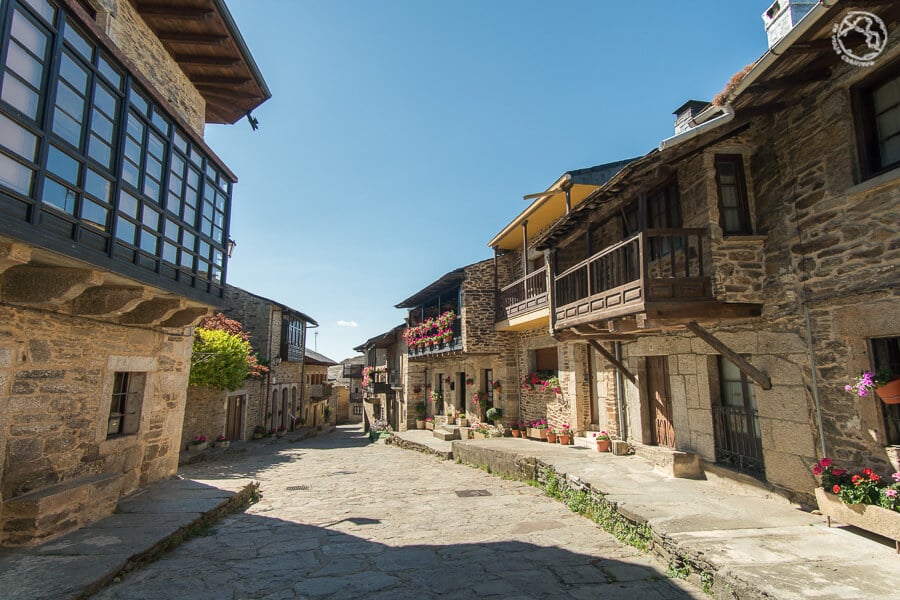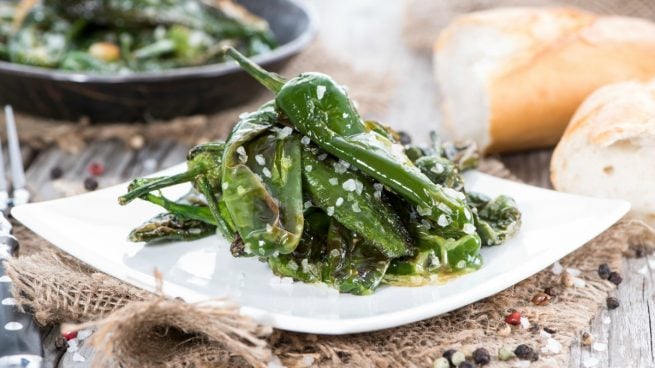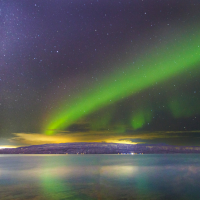La Vuelta 2020 - Stage 15: Mos > Puebla de Sanabria - 230,8 km *Spoilers*

blazing_saddles
Posts: 22,730
in Pro race
Stage 15: Mos > Puebla de Sanabria - 230,8 km
Thursday 5 November, 9-51 GMT.
The 15th stage of La Vuelta is, at 230.8 kilometres, the longest stage in this Vuelta. This is the first of the two stages that were supposed to go into Portugal and end in a big bunch sprint in Porto.
Now, with hardly a flat metre, the route travels from Mos to Puebla de Sanabria. The finish comes 17 kilometres after the last summit. The riders set out from Mos, the Galicia town where Óscar Pereiro was born.

The stage starts out with 50kms of low altitude rolling terrain, before gradually climbing on undulating roads towards a series 3rd category and unclassified climbs. Only the final one of which plays out above 1000 metres. All told, there are approximately 4500 metres of climbing in total.
So again look for teams to put pressure on Jumbo.


The Alto de Carracedo is crested after 76 kilometres. The climb to the top is 7 kilometres long and slopes at 5%. Following a short descent the ascent continues for a bit before the downhill begins.

Back in the valley the road goes straight back up again on Alto do Furriolo, a hill of 7.2 kilometres long with an average gradient of 4.7%. A short descent takes the riders to one of the few flat sections of the day. It is 25 kilometres long.

After an uphill stretch the riders descend into the Támega valley. After crossing the river they tackle the Alto de Fumaces, a 12 kilometres climb at 4.2%. On the summit there are still almost 80 kilometres left to race.

The Fumaces evens out at the top and the route continues on a plateau for a few kilometres. After a short descent the road continues in undulating and uphill fashion to the foot of the Alto de Padornelo. The climb to the top – at 1,340 metres the highest point of the day – is 6.5 kilometres long, while the average gradient sits at 3.7%.

The riders plunge down 6 kilometres before they reach the last 11 kilometres stretch on the flat.

Mos
Unprecedented departure
15.142 inhabitants
The Louro River floods through Mos from north to south, making the municipality a valley region.
Mos is a transit point along the Portuguese version of The Way of St. James, the stop just before Pontevedra. After Mos, you head North, towards the Santiago Cathedral, where the pilgrimage comes to an end.
There is no significant urban nucleus and most of the population live scattered across the municipality. Family-owned farms and vineyards are very common.

Puebla de Sanabria
1 stage of La Vuelta have had finale in Puebla de Sanabria
1.373 inhabitants
Puebla de Sanabria is a small town located in the north-western part of the province of Zamora in Spain, between the rivers Tera and Castro. The Zamora municipality, with its impressive 15th century castle-fortress, already knows what it means to host a La Vuelta arrival. It did so in the race’s 2016 edition, with the victory going to Jonas van Genechten, who won his first and only Grand Tour stage that day, beating the professional peloton favourites including Daniele Bennati and Alejandro Valverde.

Pimientos de Padrón (Padron Peppers)
Some are spicy and some are mild, but it’s impossible to tell until you try them. The peppers are fried whole and sprinkled with rock salt—simple but delicious!

Cocido Gallego (Galician Stew)
This traditional stew is a guaranteed winter warmer, full of hearty flavors like pork shoulder, chorizo, chickpeas, pig’s ears, cabbage and turnip tops. Boil everything to perfection and serve with a drizzle of olive oil and smoked paprika.

Merluza (Hake)
Perhaps the most popular fish in Northern Spain, hake (or merluza in Spanish) can be found all over Galicia. The most traditional dish is merluza a la gallega. This is simply hake boiled with potatoes and served in a sauce made from garlic and pepper.

Thursday 5 November, 9-51 GMT.
The 15th stage of La Vuelta is, at 230.8 kilometres, the longest stage in this Vuelta. This is the first of the two stages that were supposed to go into Portugal and end in a big bunch sprint in Porto.
Now, with hardly a flat metre, the route travels from Mos to Puebla de Sanabria. The finish comes 17 kilometres after the last summit. The riders set out from Mos, the Galicia town where Óscar Pereiro was born.

The stage starts out with 50kms of low altitude rolling terrain, before gradually climbing on undulating roads towards a series 3rd category and unclassified climbs. Only the final one of which plays out above 1000 metres. All told, there are approximately 4500 metres of climbing in total.
So again look for teams to put pressure on Jumbo.


The Alto de Carracedo is crested after 76 kilometres. The climb to the top is 7 kilometres long and slopes at 5%. Following a short descent the ascent continues for a bit before the downhill begins.

Back in the valley the road goes straight back up again on Alto do Furriolo, a hill of 7.2 kilometres long with an average gradient of 4.7%. A short descent takes the riders to one of the few flat sections of the day. It is 25 kilometres long.

After an uphill stretch the riders descend into the Támega valley. After crossing the river they tackle the Alto de Fumaces, a 12 kilometres climb at 4.2%. On the summit there are still almost 80 kilometres left to race.

The Fumaces evens out at the top and the route continues on a plateau for a few kilometres. After a short descent the road continues in undulating and uphill fashion to the foot of the Alto de Padornelo. The climb to the top – at 1,340 metres the highest point of the day – is 6.5 kilometres long, while the average gradient sits at 3.7%.

The riders plunge down 6 kilometres before they reach the last 11 kilometres stretch on the flat.

Mos
Unprecedented departure
15.142 inhabitants
The Louro River floods through Mos from north to south, making the municipality a valley region.
Mos is a transit point along the Portuguese version of The Way of St. James, the stop just before Pontevedra. After Mos, you head North, towards the Santiago Cathedral, where the pilgrimage comes to an end.
There is no significant urban nucleus and most of the population live scattered across the municipality. Family-owned farms and vineyards are very common.

Puebla de Sanabria
1 stage of La Vuelta have had finale in Puebla de Sanabria
1.373 inhabitants
Puebla de Sanabria is a small town located in the north-western part of the province of Zamora in Spain, between the rivers Tera and Castro. The Zamora municipality, with its impressive 15th century castle-fortress, already knows what it means to host a La Vuelta arrival. It did so in the race’s 2016 edition, with the victory going to Jonas van Genechten, who won his first and only Grand Tour stage that day, beating the professional peloton favourites including Daniele Bennati and Alejandro Valverde.

Pimientos de Padrón (Padron Peppers)
Some are spicy and some are mild, but it’s impossible to tell until you try them. The peppers are fried whole and sprinkled with rock salt—simple but delicious!

Cocido Gallego (Galician Stew)
This traditional stew is a guaranteed winter warmer, full of hearty flavors like pork shoulder, chorizo, chickpeas, pig’s ears, cabbage and turnip tops. Boil everything to perfection and serve with a drizzle of olive oil and smoked paprika.

Merluza (Hake)
Perhaps the most popular fish in Northern Spain, hake (or merluza in Spanish) can be found all over Galicia. The most traditional dish is merluza a la gallega. This is simply hake boiled with potatoes and served in a sauce made from garlic and pepper.

"Science is a tool for cheaters". An anonymous French PE teacher.
1
Comments
-
Although they are averaging only 36kph, the ASO seemed to have messed up the start time for tv coverage, as it looks like the stage will finish about a full hour ahead of schedule.
Largish group of 13 up the road will a lead of a little under 6 minutes. Tim Wellies is there again.
Guillaume Martin (Cofidis), Julien Simon (Total Direct Energie) and Jonathan Lastra (Caja Rural-Seguros RGA), Mattia Cattaneo (Deceuninck-Quick Step), Rui Costa (UAE Team Emirates), Rob Power, Mark Donovan (Sunweb), Alex Aranburu, Luis Leon Sanchez (Astana), Nick Schultz, Robert Stannard (Mitchelton-Scott), Tim Wellens (Lotto Soudal), Jose Joaquin Rojas (Movistar)"Science is a tool for cheaters". An anonymous French PE teacher.0 -
Relentless looking parcours. I would hazard a guess that not many in the peloton bounced out of bed with glee this morning.0
-
Love padron peppers in salt like that...0
-
Mostly slow motion cat & mouse so far.The above may be fact, or fiction, I may be serious, I may be jesting.
I am not sure. You have no chance.Veronese68 wrote:PB is the most sensible person on here.0 -
Could end up with a few spectaculars"If I was a 38 year old man, I definitely wouldn't be riding a bright yellow bike with Hello Kitty disc wheels, put it that way. What we're witnessing here is the world's most high profile mid-life crisis" Afx237vi Mon Jul 20, 2009 2:43 pm0
-
Very vuelta"If I was a 38 year old man, I definitely wouldn't be riding a bright yellow bike with Hello Kitty disc wheels, put it that way. What we're witnessing here is the world's most high profile mid-life crisis" Afx237vi Mon Jul 20, 2009 2:43 pm0
-
It's looking more like a winning solo break for the guy who won the 2011 Baby Giro. Would be his first WT-level win (and third pro win).0
-
Splendid Spanish weather.
The battle seems to be won by Cattaneo."Science is a tool for cheaters". An anonymous French PE teacher.0 -
Hmmmm.The above may be fact, or fiction, I may be serious, I may be jesting.
I am not sure. You have no chance.Veronese68 wrote:PB is the most sensible person on here.0 -
This could come down to a last-km catch. Or possubly even a Cattaneo m.t. finish.
Was a 3.4km catch in the end.0 -
Phillipsen wins
GC guys seemed to sit up, were times neutralised?0 -
Safe to say UAE are chuffed!The above may be fact, or fiction, I may be serious, I may be jesting.
I am not sure. You have no chance.Veronese68 wrote:PB is the most sensible person on here.0 -
Wow, Jasper Philipsen took it ahead of Pascal Ackermann and Jannik Steimle. Cracking performance on a wet, lumpy 6hr day.0
-
Young Brit, Alf/Fred Wright 4th."Science is a tool for cheaters". An anonymous French PE teacher.0
-
Ackerman should be disqualified for that sprint. Switched Philipsen, then Steimle. Went from right to left.0
-
Gaps among the GC men.
Vlasov +7s, Großschartner +14s are the best so far
Edit: Now all appear as st, which is good, as I spotted Hugh Carthy sitting up about a km out and he rolled in a minute 32 behind."Science is a tool for cheaters". An anonymous French PE teacher.0 -
6:22:36 for a Grand Tour stage win must be the longest for some time. That's verging on WCh RR / Monument duration.
Ironic that most of the remaining sprinters clinched today's stage as opposed to stage 10.
He'll be chuffed with that. Good motivation for next season.blazing_saddles said:Young Brit, Alf/Fred Wright 4th.
0 -
Jasper drops the "F" bomb, first word in his interview.
 "Science is a tool for cheaters". An anonymous French PE teacher.0
"Science is a tool for cheaters". An anonymous French PE teacher.0 -
Hadn't realised he was in the race (or even that he had moved up to this level). Former Junior Tour of Wales winner, that race has quite a decent alumni.blazing_saddles said:Young Brit, Alf/Fred Wright 4th.
0 -
Too right.Pross said:
Hadn't realised he was in the race (or even that he had moved up to this level). Former Junior Tour of Wales winner, that race has quite a decent alumni.blazing_saddles said:Young Brit, Alf/Fred Wright 4th.
The men currently in 3rd and 4th place in this Vuelta both being previous winners.
It's roll of honour is a who's who of British cycling over the past few decades, plus a smattering of European WT riders of repute."Science is a tool for cheaters". An anonymous French PE teacher.0 -
1999 Johan van Summeren won, 2005 EBH second behind Dowsett, 2013 Sam Oomen second (Scott Davies won, James Knox third).blazing_saddles said:
Too right.Pross said:
Hadn't realised he was in the race (or even that he had moved up to this level). Former Junior Tour of Wales winner, that race has quite a decent alumni.blazing_saddles said:Young Brit, Alf/Fred Wright 4th.
The men currently in 3rd and 4th place in this Vuelta both being previous winners.
It's roll of honour is a who's who of British cycling over the past few decades, plus a smattering of European WT riders of repute.0 -
Fred Wright has, along with Ethan Hayter, been terrorising Herne Hill track league regulars for the past 6-7 years. Great to see him doing so well in his first full season.Pross said:
Hadn't realised he was in the race (or even that he had moved up to this level). Former Junior Tour of Wales winner, that race has quite a decent alumni.blazing_saddles said:Young Brit, Alf/Fred Wright 4th.
0 -
PCS has 97 finishers , is that the final result . Seems to be some names missing off the sheet including Froome , there is a 45 min time cut. EDIT its all ok 145 finishers .0
-
The 2016 Tour of Wales: 1. Wright, 2. Hayter, 3. Jake Stewart (now FdJ). All now World Tour riders.andyp said:
Fred Wright has, along with Ethan Hayter, been terrorising Herne Hill track league regulars for the past 6-7 years. Great to see him doing so well in his first full season.Pross said:
Hadn't realised he was in the race (or even that he had moved up to this level). Former Junior Tour of Wales winner, that race has quite a decent alumni.blazing_saddles said:Young Brit, Alf/Fred Wright 4th.
The Points jersey was won by Matt Walls (joining Bora next season), Hayter second and Quarterman (now Trek) 3rd
It's the domestic race to get noticed at.Twitter: @RichN950 -
https://en.m.wikipedia.org/wiki/Junior_Tour_of_WalesRichN95. said:
The 2016 Tour of Wales: 1. Wright, 2. Hayter, 3. Jake Stewart (now FdJ). All now World Tour riders.andyp said:
Fred Wright has, along with Ethan Hayter, been terrorising Herne Hill track league regulars for the past 6-7 years. Great to see him doing so well in his first full season.Pross said:
Hadn't realised he was in the race (or even that he had moved up to this level). Former Junior Tour of Wales winner, that race has quite a decent alumni.blazing_saddles said:Young Brit, Alf/Fred Wright 4th.
The Points jersey was won by Matt Walls (joining Bora next season), Hayter second and Quarterman (now Trek) 3rd
It's the domestic race to get noticed at.
I did 1990, looking at that list the scouts didn't show up which explains my lack of a pro contract (I was lanterne rouge after a promising prologue hill climb).1




